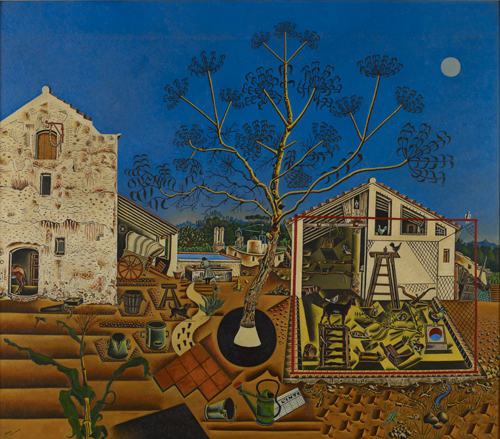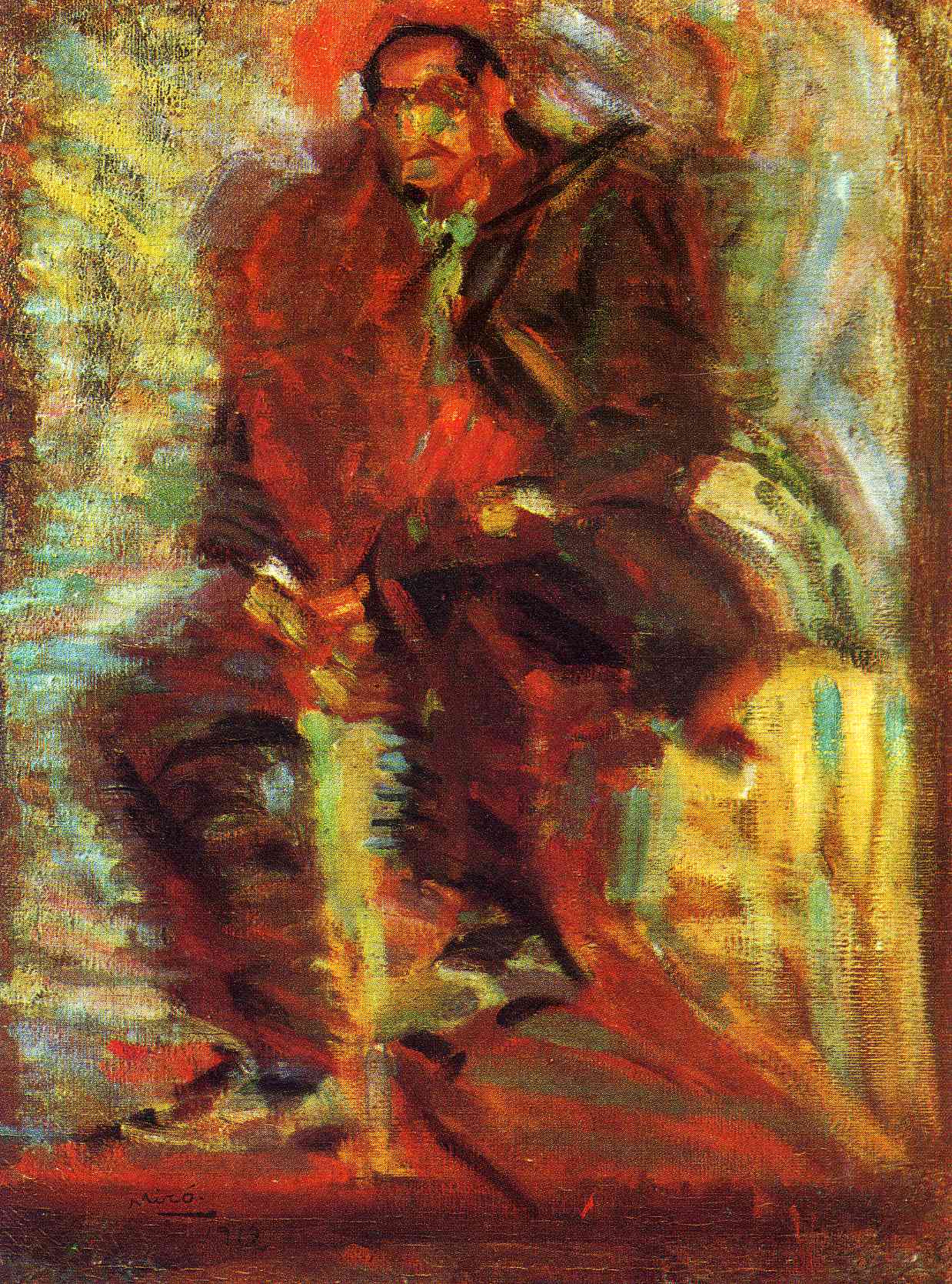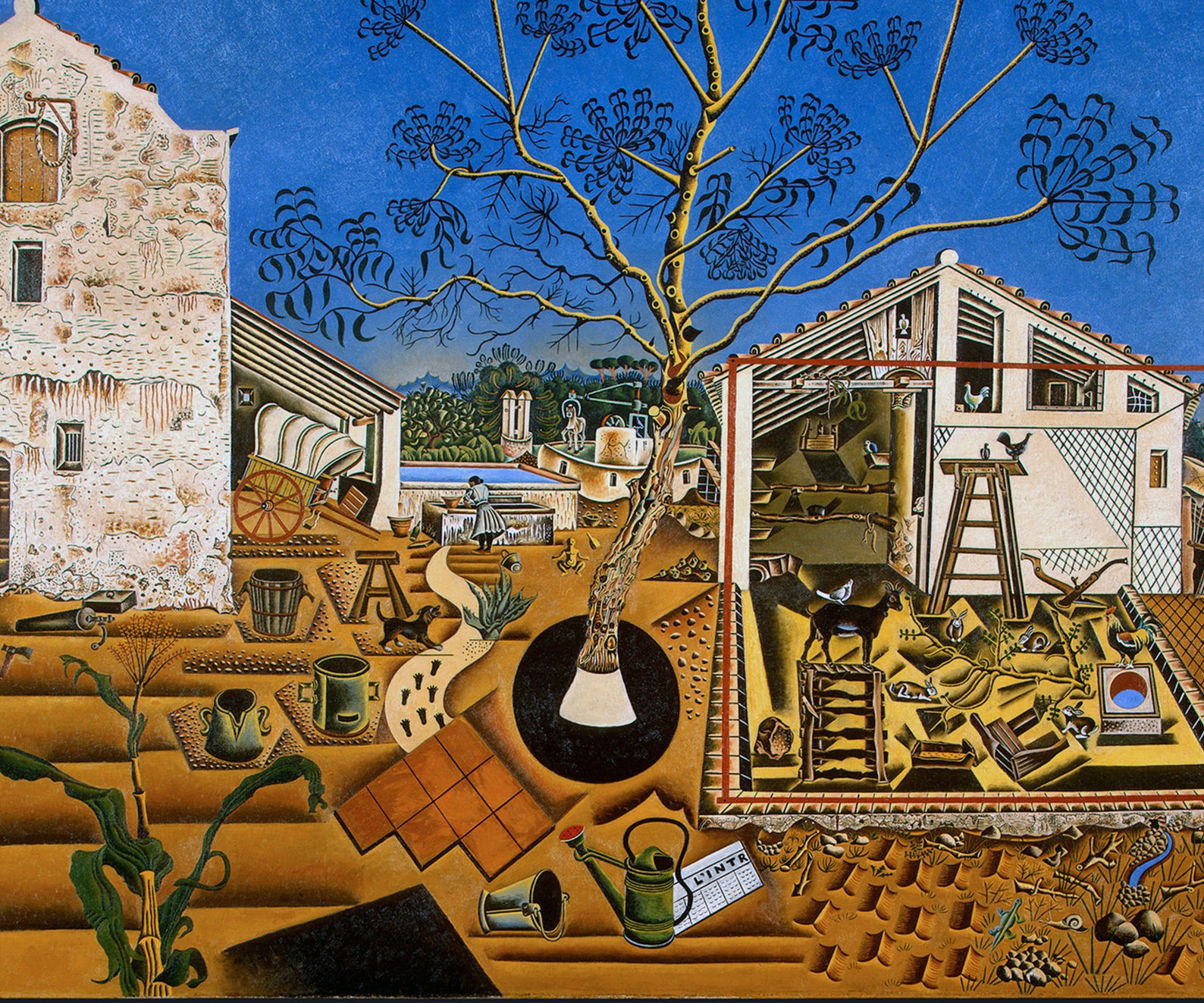

Despite his shyness he became friendly with Francis Picabia, one of the leaders of the dada movement who had taken refuge in Barcelona during the war, but Picabia merely whetted his appetite to leave. His mother and Picasso's mother were friends, and, while he saw the Parade which Picasso designed for the Ballets Russes in 1917, Miró was too shy to call on him. He came to see Barcelona as philistine and confining, and, like Catalan artists of previous generations, he began to dream of Paris. He became aware, however, that the real world was elsewhere, that there were no cubists or constructivists or surrealists working in Barcelona, that most contemporary art displayed in the city was old-fashioned and dull he was indignant when an abstract painting by a friend was publicly mocked. Nonetheless, he admired Galí and made a number of friends in his art school, and, like Picasso before him, began to enjoy the street life of the city. Miró invariably made them look like sunsets. Galí worked with him, tried to make him do still-lives of objects without colour such as a glass of water or a potato. He still could not draw, could not, in his own words, tell the difference between a curved line and a straight line. He had many friends, but, despite a connection with the surrealists, he was a member of no group, and remained a deeply independent figure.Īt the age of 19 he went to study in an art school run by a Catalan called Francesc Galí. His work may seem apolitical and pure, but he remained all his life a fervent Catalan (his notebooks are in Catalan or French, but not in Spanish), and he made his left-wing sympathies clear during the Spanish civil war and under the Franco regime. He seemed shy and timid, but he possessed a deeply uncompromising spirit. He was, and indeed remains, an easy figure to misread.

At the age of 17, under pressure from his parents, he began work as a clerk he toiled in an office six days a week from eight in the morning until nine in the evening, and after a year suffered a kind of breakdown. Thus when he began to study art in the Llotja, where Picasso had studied, he was not encouraged to stay. In any case, he could not make academic drawings. He was, from an early age, more interested in pure colour and structure than in representation. Miró had none of Picasso's prodigious and precocious talent. Even though the city was going through enormous changes in the years when Miró was growing up, he seemed as much stifled by its conservative atmosphere as excited by the new architecture or the political ferment there.

Miró's father had a business in nearby Plaça Reial mending and making watches.

The first was the building where he was born in 1893 it is in a small arcade off Carrer de Ferran, near Plaça Sant Jaume in the old quarter of Barcelona, with the inauspicious address of Passeig del Credit. T here are four buildings which were important for Joan Miró, and each of them in different ways helps us to understand his complex spirit and the art he made.


 0 kommentar(er)
0 kommentar(er)
